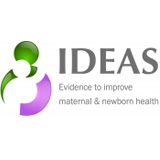
View Resource View Resource
Background
Cost-effective strategies are needed to improve the use and provision of maternal and newborn health care, and increase the coverage of maternal and newborn health interventions.
Findings
Demand and supply-side strategies can be cost-effective, and there is strong evidence in certain contexts for:
- Women’s groups to encourage uptake of maternal and newborn health care and promote health practices
- Providing newborn care at home through community health workers and traditional birth attendants
- Extending routine antenatal care to deliver life-saving interventions, such as mosquito nets for malaria control
- Encouraging and supporting breastfeeding through adapted hospital-based maternity care
- Facility-based quality improvement initiatives to enhance compliance with care standards
Lessons learned
- Questions remain about the extent to which both costs and effects vary by implementation, context and scale
- Evidence is limited by the number of studies on different types of demand and supply strategies and the lack of high quality studies using comparable cost-effectiveness measures.
- More attention should be given to the design and reporting of cost-effective studies.